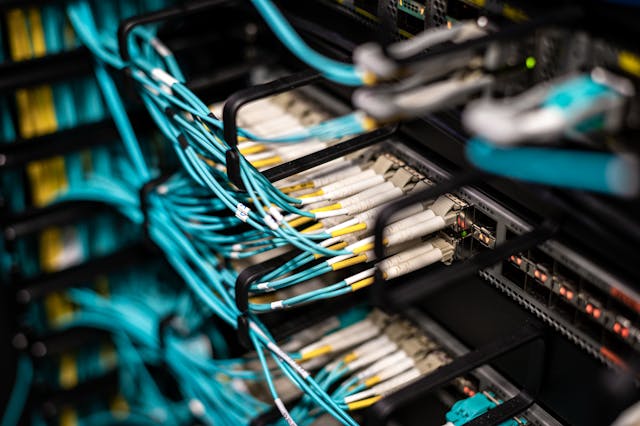As the world becomes increasingly technologically driven, the demand for advanced measurement and sensing technologies has never been higher. Traditional methods often fall short in precision, speed, and adaptability across diverse industries, from healthcare to manufacturing. This shortfall not only leads to inefficiencies and increased costs but also poses risks to safety and compliance. The urgency for more sophisticated solutions grows as these sectors evolve.
Photonics and optical technologies are at the forefront of this revolution, offering unprecedented accuracy and efficiency in data collection and analysis. These innovations in measurements and sensing technologies enhance the capabilities of existing applications and unlock new possibilities in challenging environments. Learn how these innovations are transforming critical industry operations.
The Role of Photonics in Sensing Technologies
Photonics plays a crucial role in the evolution of sensing technologies by enabling the precise manipulation of light to gather data across a range of applications. This technology proves invaluable in situations where traditional electronic sensors fail, such as in high-radiation environments or where high-speed monitoring is required.
For instance, in the telecommunications industry, photonic-based sensors provide critical real-time feedback that maintains the integrity of data transmission over vast networks. Their ability to operate without interference from electromagnetic noise or temperature fluctuations also makes them perfect for critical infrastructure monitoring, including power plants and transportation systems.
Advancements in Fiber Optic Sensors
Fiber optic sensors, utilizing the properties of light within thin strands of glass or plastic fibers, offer several advantages over conventional sensors, including minimal loss of signal over long distances and immunity to electromagnetic interference. A significant innovation in this area is the development of Photonic Crystal Fibers (PCFs), which are specifically engineered to enhance the interaction of light within the fiber more efficiently than traditional fibers.
These fibers are crucial in applications requiring precise and responsive measurements. To ensure uninterrupted fiber connections, advanced temperature sensors are used to ensure precise temperature control. These sensors provide highly accurate readings with fast response times, making them indispensable in fiber optic temperature measurements. This capability ensures that fiber optic operations can achieve optimal accuracy and efficiency, improving overall service quality and process safety.
Breakthroughs in Environmental Sensing
Recent advancements in environmental sensing technologies are making significant contributions to conservation and public health efforts. Modern sensors now facilitate the monitoring of ecosystems with minimal human intervention, providing continuous streams of data regarding forest health, ocean temperatures, and urban air quality.
These sensors are equipped with advanced connectivity and can relay information instantly, allowing for immediate responses to environmental threats like wildfires or pollution spikes. This technology not only helps in tracking the effects of climate change but also empowers governments and organizations to deploy quicker and more targeted responses, enhancing the ability to protect natural habitats and public health.
Impact on Healthcare
Advanced sensing technologies have introduced a new era in healthcare, enhancing both diagnostic tools and treatment methods. These technologies enable continuous monitoring of patients’ physiological parameters, such as glucose levels or cardiac activity, from remote locations, facilitating outpatient care and reducing hospital visits and costs. Such capabilities are particularly transformative in rural or underserved regions with scarce medical resources.
Additionally, the integration of these sensors into wearable devices has democratized health monitoring, empowering individuals to take proactive roles in managing their health conditions with greater precision and personalized information. Photonic sensors integrated into nanotechnology platforms are also revolutionizing regenerative medicine by enabling the precise manipulation and monitoring of cellular behaviors at the nano-scale, which is essential for tissue engineering and healing therapies.
Innovations in Industrial Applications
In the industrial sector, the introduction of innovative sensors is revolutionizing quality control and safety measures. Sensors embedded within manufacturing equipment can predict and notify technicians of imminent machinery failures before they occur, averting disruptions and enhancing productivity. In the automotive industry, sensors improve the responsiveness of safety mechanisms, such as deploying airbags at the optimal moment during a collision to minimize passenger injuries.
Additionally, these sensors facilitate the integration of advanced analytics, enabling factories to transition towards smart manufacturing environments where decision-making is data-driven. The precision and reliability of these sensors not only optimize manufacturing processes but also advance the development of autonomous vehicles, ensuring a future of safer and more efficient transportation.
Future Trends in Measurement and Sensing Technologies

The future of measurement and sensing technologies is closely tied to the advancements in AI and IoT. These technologies are expected to bring about a paradigm shift in how data from sensors is processed and utilized. The integration of AI, for instance, allows for the development of smart sensors that not only collect data but also make intelligent decisions based on that data in real-time.
This could lead to smarter cities where traffic flows are automatically adjusted to reduce congestion or energy systems that dynamically adjust their output based on real-time demand predictions. As these technologies continue to evolve, their applications will increasingly impact every aspect of personal and professional life, offering even greater efficiencies and capabilities.
Conclusion
The advancements in measurement and sensing technologies are not just enhancing existing applications but also paving the way for previously unimaginable innovations. These technologies are critical for the continued growth and sustainability of many industries, driving forward improvements in a wide range of applications. By providing more precise data, these sensors help engineers and research scientists create solutions that are safer, more efficient, and better aligned with our need
















